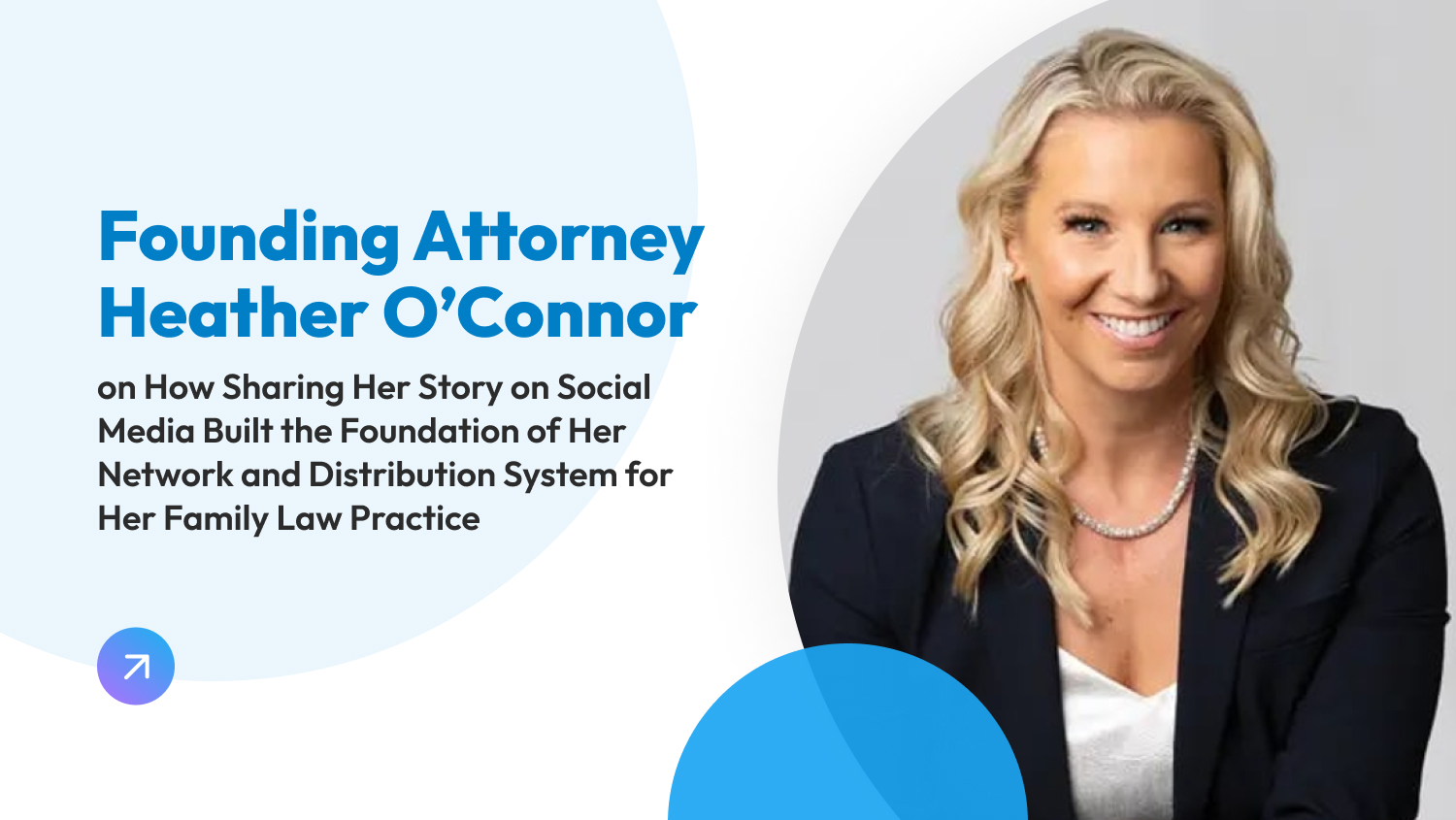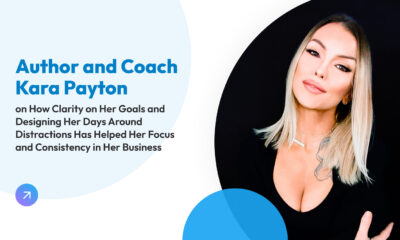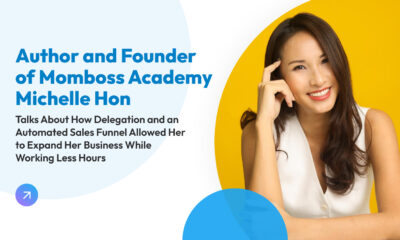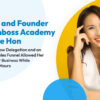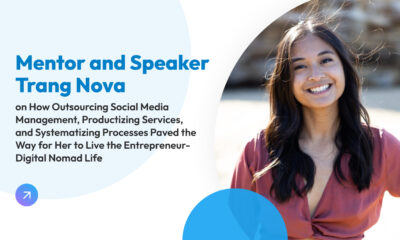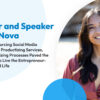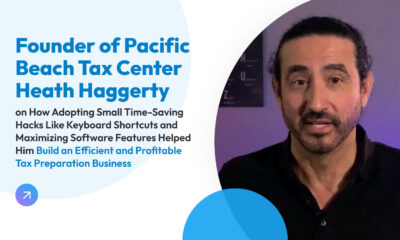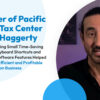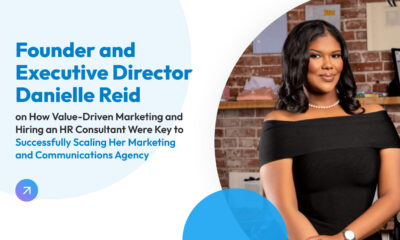Case Study
Founding Attorney Heather O’Connor on How Sharing Her Story on Social Media Built the Foundation of Her Network and Distribution System for Her Family Law Practice
“I’m going to be a lawyer!” Heather O’Connor wasn’t a child when she made that pronouncement. She was in the middle of a high-conflict divorce, a stay-at-home mom of three who depended on skating lessons for a little income.
Her life prior to that was all about competitive figure skating, and she didn’t have a college education. Yet, against so many odds, she became an attorney and built a successful family law practice that is grounded on empathy for the emotional struggles that come with difficult divorce and custody battles.
Read on to learn about her challenges starting this new phase of her life and the systems, people, and tools that have helped her create a business with a heart for both its clients and employees. Don’t forget to check out her firm’s Productivity Stack Quick Reference Checklist and her Read-Watch-Listen List at the end of the article.
Table of Contents
- Starting
- Growing
- Scaling and Success
- Hindsight: What O’Connor would have done earlier
- Advice from O’Connor: If you’re doing a good job, the money will come
- Wrap Up
- Productivity Stack Quick Reference
- O’Connor’s Read-Watch-Listen List
- More About Heather O’Connor
Starting
Challenge 1: Getting the education to pursue her dream
O’Connor’s divorce was highly contentious and dragged on for over a decade. She worked with excellent lawyers who were experts on getting her the best legal outcome. But throughout the process, she felt they were detached from the mental and emotional challenges she was going through.
“They didn’t get the emotional roller coaster that goes along with a divorce. As I’m watching it, I’m thinking, ‘I can do this,’ and I can bring something to the table that people aren’t doing right now. It’s working with the person as soon as they come in to start changing their perceptions, changing their habits. Because if you don’t do that simultaneously, chances are [the client is] going to end up in the exact same situation [they] just got out of, and then [they]become a repeat customer.”
This was her vision for the type of family law attorney and practice she wanted to build. But where to start, and how realistic was this for her at that time in her life? She didn’t have a source of income (the demand for figure skating classes went away when the economy crashed in the early 2000s), she had to raise three kids who were then under six years old, and in the middle of all that, wanted to get an undergraduate degree and then go to law school.
Solution: O’Connor went ahead with her plan anyway. She tells us, “Thank goodness I was naive because it was a lot more work than I really expected. But the way that I saw it, I could either continue to struggle financially as a bartender or a waitress; I didn’t have the education. Sports had been my life, and that was gone. So I could either continue to struggle and live that way, or I could struggle with a purpose and a direction that at some point, someday, I was going to make things better not only for myself but for a lot of people.”
She went to community college for her undergrad. There was a period when she and her kids were on food stamps and lived off peanut butter and jelly sandwiches. She joined a multi-level marketing company called Beachbody while still in school, which helped on the financial side, as well as teaching her marketing skills that were critical to building her client base for private practice later on.
She also credits her many years of training and competing as a figure skater in her youth for giving her the discipline, laser focus, and grit to get through all the challenges in the way of her goal. “I remember competing, and I’d go out to do my program. [After I was done] I would have no idea what just happened because I was so focused on the moment. By the time it was over, I was like, ‘Did I fall? Did I do okay? I don’t know what just took place.’ And through law school, being able to tune out the noise was so important.”
People: O’Connor, Beachbody network
Systems: Choosing to ‘struggle with a purpose’ versus struggle financially without the means to improve her situation, taking on a side hustle to support herself and her family while completing her education, applying mental fortitude and focus learned from sports to get her through this difficult period
Tools: College application, food stamps, Myspace, and Facebook for her MLM business
Challenge 2: Working for others before launching her own firm
Throughout her years of study, O’Connor’s goal was always clear: to set up her own firm and bring to life her vision of a compassionate family law practice. But after graduation, she was invited to a two-year clerkship with the Rhode Island Supreme Court Justice, an opportunity too good to pass on.
She was sure that after the clerkship, she could switch back to pursuing her dream, but LinkedIn pointed her in another direction. She kept getting a notification about an opening for a lawyer at an established family law firm. Was it another opportunity she should grab, or was it potentially just another delay or distraction from achieving her dream?
Solution: She decided to apply to the firm that popped up in her LinkedIn recommendations and underwent a rigorous screening process. She worked at that family law firm for about four years, proved her worth, and even won over the managing partner, who initially didn’t want to hire her. Aside from her legal skills, her knowledge of the sales process and ability to bring in clients have made her invaluable to the firm.
Rather than being a delay or distraction from her goal, her years with the firm gave her an insider view of how things were done in family law practices. “It was a great experience. I love the owner. He’s since passed, but he taught me a lot about the business side. I also saw things in that firm that I didn’t like. And so I was able to take real-life situations, take the good, look at the bad, and really figure out how I wanted to formulate my own firm.”
People: O’Connor, the family law firm that hired her
Systems: Gaining experience as an employee in a law firm to prepare for launching your own practice
Tools: LinkedIn, where she saw the opportunity with the law firm
Challenge 3: Starting her own practice: How to know if you can afford to hire
When O’Connor got to the point where she was bringing in more clients than the family law firm was assigning to her, she decided it was time to take the leap and set up her own practice. Her experience with sales and her referral network from her MLM days helped a lot with getting her busy with clients. Her issue became, could she afford to hire somebody to help with the case work?
“Knowing that you don’t have that security of a paycheck is absolutely terrifying. I didn’t even know if I was going to have enough money to support myself and my children. Never mind taking on the responsibility of somebody else. But with legal work and as a business owner, when you’re doing everything, that is a lot of work. So, in order to get the legal work done, I did need to bring somebody in.”
Solution: Her first hire was an office administrator. But she really needed a paralegal and couldn’t decide on how she was going to get comfortable with the additional financial commitment when she was still starting out. So she enrolled in a coaching program, How to Manage a Small Law Firm, hoping to find answers from those who had done it successfully before.
She had a simple conversation with her coach that helped her push forward.
“He asked me, ‘If it’s successful, would you be able to make more money? And would you be able to support [the paralegal]? I was like, ‘Well, yeah, if it all works out.’ He goes, well, then you better figure out how to make it work, right?’ And I got off that call and thought, ‘You know what? He’s right.”
She finally hired a paralegal to join her practice full-time, and it quickly paid off. Within the first six months of starting her practice, she earned $250,000 in revenue.
She admits her first two hires were the most nerve-racking. But even after six years of building her team, it is still not an easy process. “Every hire is terrifying. It’s like getting into a relationship all over again where you’re dating. I don’t want to hire somebody that isn’t going to work out. It’s a part of business, but that part is never comfortable because you just want it to work out.”
People: O’Connor, office administrator, paralegal, business coach
Systems: Investing in a business coach, don’t try to reinvent the wheel – see how others have done it successfully and learn from them
Tools: LinkedIn or other job portal for her office administrator, Google search to find her coach: How to Run a Small Law Firm
Growing
Challenge 4: Distribution: Sharing her story on social media and dealing with the hate
Her MLM experience taught her to share her story on social media, her ‘why’ or her motivation to keep striving towards her goals, and her personal struggles. She started on MySpace and then Facebook while still in college, talking about her fears and insecurities about how she was raising her kids and also about her difficult divorce proceedings. This vulnerability helped in building her following, a support system, and also a network for business and referrals.
But her online presence also opened her to personal attacks. One time, opposing counsel dug up her old Beachbody videos and sent her a whole email with derogatory comments about her weight and about her not belonging to the law profession. And moving to TikTok more recently, she has also encountered a lot of mean comments and haters. “Especially if I talk about child support. I get the male haters that say, ‘I’m pro-woman, and I hate men.”
Solution: While at first, she wanted to respond to these attacks (she briefly thought about sending the nasty email from opposing counsel to his own wife), she has since learned to take a deep breath and follow her own advice to clients, “Don’t instigate drama.”
And about the male haters, she tells us, “The way that my firm represents people is we represent the underdog, and that could be man, it could be woman, it’s whoever’s getting screwed. [These] are the people that we really like to come in and lift up. And I think now whenever I see those really negative comments, I say, ‘Oh, cool, you’re helping my views.’ So it’s a difference in perception. I’m not taking it personally.”
People: O’Connor
Systems: Practicing what she advises clients, “Don’t instigate drama,” switching perspective to see haters’ attacks as engagement that boosts her visibility
Tools: Myspace, Facebook, TikTok
Scaling & Success
Challenge 5: Rebranding the firm so clients would be happy to work with the other lawyers
The firm grew rapidly through the years. O’Connor has a team of 20 with 9 lawyers on board as of today. But in the earlier stages of expanding and scaling up her practice, prospects only wanted to work with her.
“As a lawyer, a lot of your business is you. It’s your reputation. It’s what you put out there. When I first started out, everything was about me. And people would call in because they’d want me. It was very difficult as I started hiring other attorneys who I wanted to be successful and then having the pushback of, ‘No. I was referred to Attorney O’Connor, so that’s who I want.’”
Solution: O’Connor tells us it was a long transition to get clients to choose to work with other lawyers in her firm, and it was a multi-pronged approach that finally got the firm there.
First, they revamped the website. They removed the emphasis on O’Connor, her background, and her accomplishments, and instead highlighted the entire firm as a team.
Second, she would tell potential clients that working with another lawyer in the firm is like “… a twofer. You pay for the one attorney, but you’re really getting two.” Because O’Connor, especially in the earlier years, was always very involved in all the cases. She wanted to maintain a level of service at par with what she herself would deliver. And she only hired and retained lawyers whom she would personally trust with her own case. So part of the messaging to clients was, “If you trust her, you need to trust the fact that she’s bringing people who she trusts.”
O’Connor also raised her rates well above that of the associates, which partly helped discourage clients from insisting on working directly with her. Lastly, she created an in-house sales team that would guide the conversations with new clients so that they would see the value in working with the other lawyers.
Her sales team is a prospective client’s first point of contact with the firm. They are tasked with conveying the values and culture that set them apart from the competition and also bind them together as a cohesive team. “I want [clients] to get off the phone and be like, ‘What the hell was that? That was not what I expected when I was calling a firm. I feel like I just talked with my best friend.’ That is the atmosphere that I wanted to grow.”
By hiring lawyers and other team members who are able and committed to serving clients the way O’Connor envisions it, she’s been able to create a consistent culture and service level across the firm that has allowed her to successfully scale her practice.
People: O’Connor, in-house sales team, lawyers of the firm, website developers, web copywriters
Systems: Rebranding, creating a new department to handle client intake and conversations around choosing their lawyer, stringent hiring and retention policy to maintain service standards across the firm
Tools: Website, Email, Word files for case documents saved on shared drive, Excel
Challenge 6: Switching CEO and attorney hats
O’Connor has always loved legal work and litigation, walking into the courtroom just fires her up. But at the current stage of her firm, double-hatting as a CEO and a practicing attorney has become very difficult. “I’m not very good at changing hats from business owner to attorney.” And she feels it is almost a disservice to keep working directly with clients because of how challenging it is for her to shift focus.
Solution: O’Connor has decided that the CEO role takes precedence. She only works with a handful of long-time clients now, those who have been with her a while and whose cases she wants to see to their conclusion. Aside from her involvement in management team level strategizing, she will only jump on the rare, interesting case that catches her attention. Otherwise, she sticks with the behind-the-scenes role focused on growing the firm.
She admits that her work style and time management as CEO could probably be improved. “I cannot say I am the most organized in that respect. I am probably what I would categorize as a workaholic. I love working. I work easily 10 to 12 hours a day, but I go away a lot, probably like once a month. I think it’s very important, I take a lot of vacations.”
People: O’Connor, lawyers of the firm
Systems: Choosing to work on the business to continue to scale (focus is on building a business vs. client work), building a team of attorneys that meet her service standards so she could delegate with confidence, monthly vacations to balance long workdays
Tools: Website, Email, Word files for case documents saved on shared drive, Excel
Challenge 7: Building a company for her employees
As O’Connor’s vision for the firm evolved, she began to think more about how to make work more efficient for her team. They had to upgrade their systems and tools (from Word files on an overloaded shared drive and an Excel case tracker) to more sophisticated ones that matched the scale of the business.
O’Connor also knows that they are in a high-pressure industry, particularly with their specialty in high-conflict family law issues. “The legal world is full of rollover. It’s full of people getting stressed out, and it’s full of burnout. I don’t only want to build something that’s really great for clients, I want to build a firm that people want to work at and that they’re going to be at long term.”
Solution: O’Connor selected and set up systems and tools aimed at alleviating some of the work pressures. Even prior to the pandemic, she worked on instituting virtual and work-from-home schemes to eliminate commutes and let her team have the flexibility to spend more time with their family.
“If they’re bringing their kid to kindergarten the first day, they don’t have to feel like they’re going to lose their job for taking time off. If there’s a parent-teacher meeting or if there’s anything that has to do with your kid – they have the ability and the flexibility to do that.”
Clients were resistant to this virtual setup at first. They wanted the face-to-face meetings and knowing their lawyer was at the office from 9 to 5. The pandemic changed that, and fortunately, the company was ready for the pivot to virtual. They had instituted a client management program called Clio (they tried MyCase but didn’t like it) and customized a CRM called Lawmatics.
She also delegated all sales and client evaluation/intake tasks to a separate in-house sales team. O’Connor believes lawyers aren’t typically very good at sales, and the initial client consultations involve a lengthy process of weeding out a lot of information that may not be necessary for the attorneys to know. So relieving them of this function has allowed the lawyers to focus on actual case work.
O’Connor also developed an email sequence for anyone who reached out to the firm. She spent about two months crafting mails covering relevant legal topics, plus personal development and mindset-focused content that she knew were important to client success. These automated emails helped them build an email database, which made follow-ups and subsequent communications easier.
Lastly, they created digital versions of their SOPs in a tool called Waybook. In addition to asking for digital sign-off that an employee has read and understood the SOPs, this software tracks who has read what and how much time was spent studying the procedure. This tool has made it easier to onboard and train new hires, and enforce accountability because you can review employees’ progress in the digital manuals.
People: O’Connor, in-house sales team, lawyers in her firm, marketing manager, website and SEO manager Scorpion, IT staff
Systems: Institutionalizing work-from-home and virtual systems to allow more family time for employees, separating sales and client intake functions from lawyer roles, using email sequences to automate client communication and follow-up, using a digitized employee manual as an SOP and onboarding document
Tools: Clio for client management, Lawmatics customized for CRM, website, Waybook as interactive employee manual that helps with onboarding
Hindsight: What O’Connor would have done earlier
O’Connor definitely has a heart for helping people, be it a client or someone who works in her firm. But looking back, she thinks that business-wise, it would have been better to be stricter with her hires. “I might have fired some people sooner than the chances that I gave them. That probably would have been the biggest [thing I would have done earlier], getting rid of people that weren’t performing up to standard faster.”
Advice from O’Connor: If you’re doing a good job, the money will come
O’Connor told us about how her vision and goals have changed over time. Earlier on, she aspired for ‘stuff she could get’, like getting her teeth straightened, hiring more employees, and going on vacations. When she had checked off everything she listed down in her first vision board, she found herself a little lost, thinking “Now, what am I fighting for?”
“My focus has really changed, not on the stuff that I could get. It became more about a vision of this empire. I want to create the most prominent law firm in Massachusetts, where people know when they’re coming in that they’re getting top-notch service. If you’re doing a good job at providing value for people, the money will come. But don’t chase the money.”
With this shift in her vision, she found a renewed passion. Beyond building the life she dreamed for herself and her family, she is now focused on their clients and creating a workplace for employees where they can thrive financially and professionally without sacrificing family and personal time.
Wrap Up
O’Connor’s story is inspiring not just for all that she achieved, but also because of how she maintained a positive and generous spirit after all the adversity in her personal life. We can all learn from how she leveraged skills and learnings from previous experiences to conquer new challenges as they came her way. She applied her sports and competitor mentality to get through law school, she applied her MLM networking and sales skills to get new clients while working for someone else’s firm, and she also used that experience working in someone else’s firm to help her create her ideal family law practice.
O’Connor is also a big fan of learning from others’ successes and adapting their methods to work for you. That is partly why she is big on personal and professional development, to learn from how others have made their lives better. And she always gets motivated to reach new goals by hearing other people’s stories.
Today, O’Connor is very focused on creating and nurturing a company culture and environment that serves both clients and employees. She has devoted a lot of time and resources to building that culture, looking for the right people and training them, and setting up systems and tools that empower employees and create an excellent client experience.
We wish O’Connor the best as she focuses on this next stage of scaling her practice into an even bigger empire that will help more clients and employees. She has certainly come a long way from the divorced mom living on PBJ crusts, to becoming the founder and CEO of a prominent law firm generating seven-figure annual revenues!
Productivity Stack Quick Reference
Starting
Growing
Scaling & Success
O’Connor’s Read-Watch-Listen List
- Tony Robbins
- Anybody who talks about personal development and how to improve your life and chase your dreams
- Gain the Edge! Negotiating to Get What You Want by Martin E. Latz which covers negotiating under tough situations
More About Heather O’Connor
In the wake of her divorce, Heather was broken to bits. She suddenly found herself lost as a single mother and needed to create a new life. Without even so much as a bachelor’s degree, she set off to become a divorce attorney and created O’Connor Family Law. Today, that firm supports nearly 20 staff members and has created a new firm family that puts people first. Heather lives out her dream every day by helping others create their pathway forward.
You can find out more about O’Connor Family Law through these platforms:
Website: www.familylawma.com
TikTok: @oconnorfamilylaw


